Meet our picks for the fourth edition of NABA Design Award 2022
Going behind the scenes of our selection from the winners of the wide array of extraordinary projects carried out in NABA.
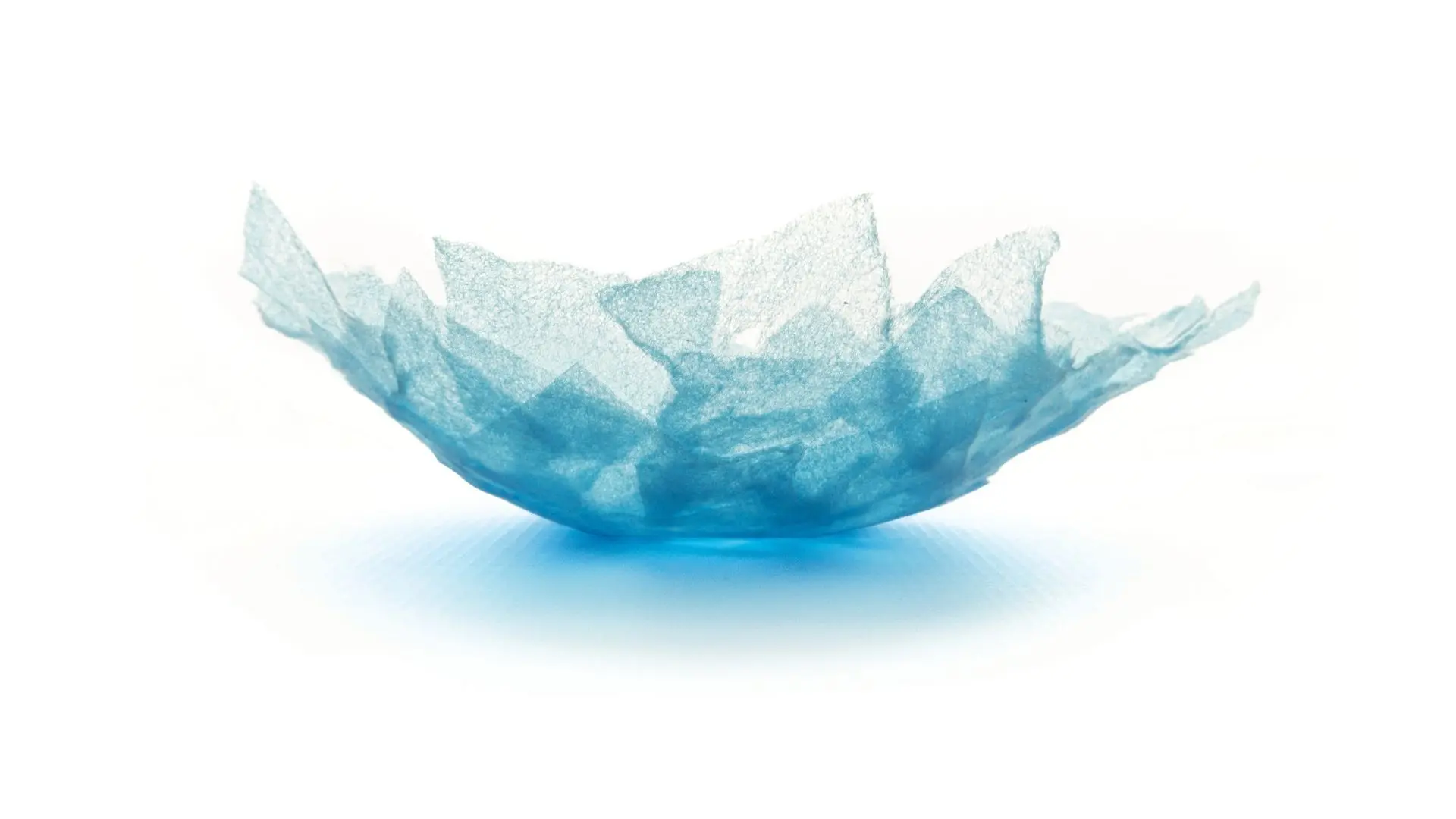
Solely dedicated towards rewarding the best students’ projects of the last academic year carried out in NABA Nuova Accademia di Belle Arti – NABA Design Award 2022 is the fourth edition of this one-of-a-kind competition.
Focusing on the Design Area programmes which encompasses – BA in Design as well as MAs in Interior, Product, Service as well as Social Design – on May 17th the Sala Excelsior of Anteo Palazzo del Cinema hosted the NABA Design Award ceremony for the best design projects developed during the previous Academic Year, representing excellence.
With DesignWanted as their media partner and a part of the jury – we decided to explore and dig deeper into our selection of the winners of NABA Design Award 2022.
BA Product Project Award: Urban Chalk by Riccardo Proli
Triennio in Design
Lecturer: Francesco Fusillo
Brilliantly featuring an eclectic compass shape with rounded and smooth lines, Riccardo Proli crafts ‘Urban Chalk’ – a fascinating minimalistic chalk that can be utilised to draw geometrical shapes.
Comprising a variety of three diverse widths in a melange of varying colour palettes – its size makes it ergonomic as well as easy to grip and the wider top part skillfully strengthens its structure.
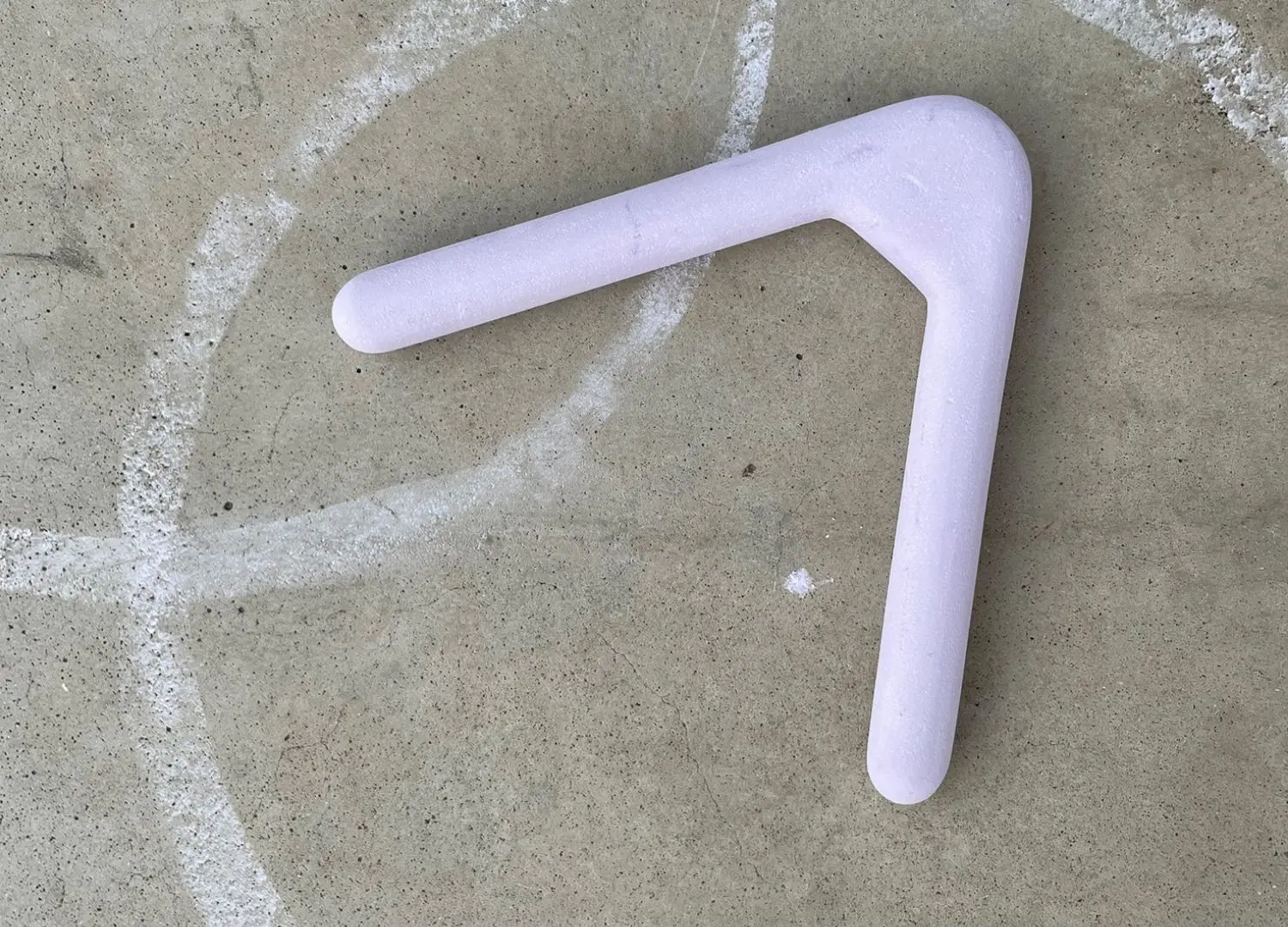
How did the idea come about and what was the research process that led you to develop this project?
Riccardo Proli: This project stemmed from a task assigned by my Product Design lecturer during the last semester of 2021, which consisted in projecting the ‘limit’. The concept of limit was not specifically defined, it could have been a border, breaking point or something related to an action.
During the initial brainstorming – I started jotting down all the thoughts that came to my mind. When I thought of the word ‘limit’, I started focusing on the concept as a line or a separation.
After many ideas and sketches, I got inspired by the hopscotch game – so I developed a chalk design that would literally ‘draw the limit’ but at the same time could be innovative, simple and intuitive.
I finally decided to develop a compass inspired chalk – during its initial fabrication phase, I noticed that it was very fragile on the top so I decided to add material between the two segments to strengthen the structure. The smooth shapes additionally make the chalk easy to handle and use.
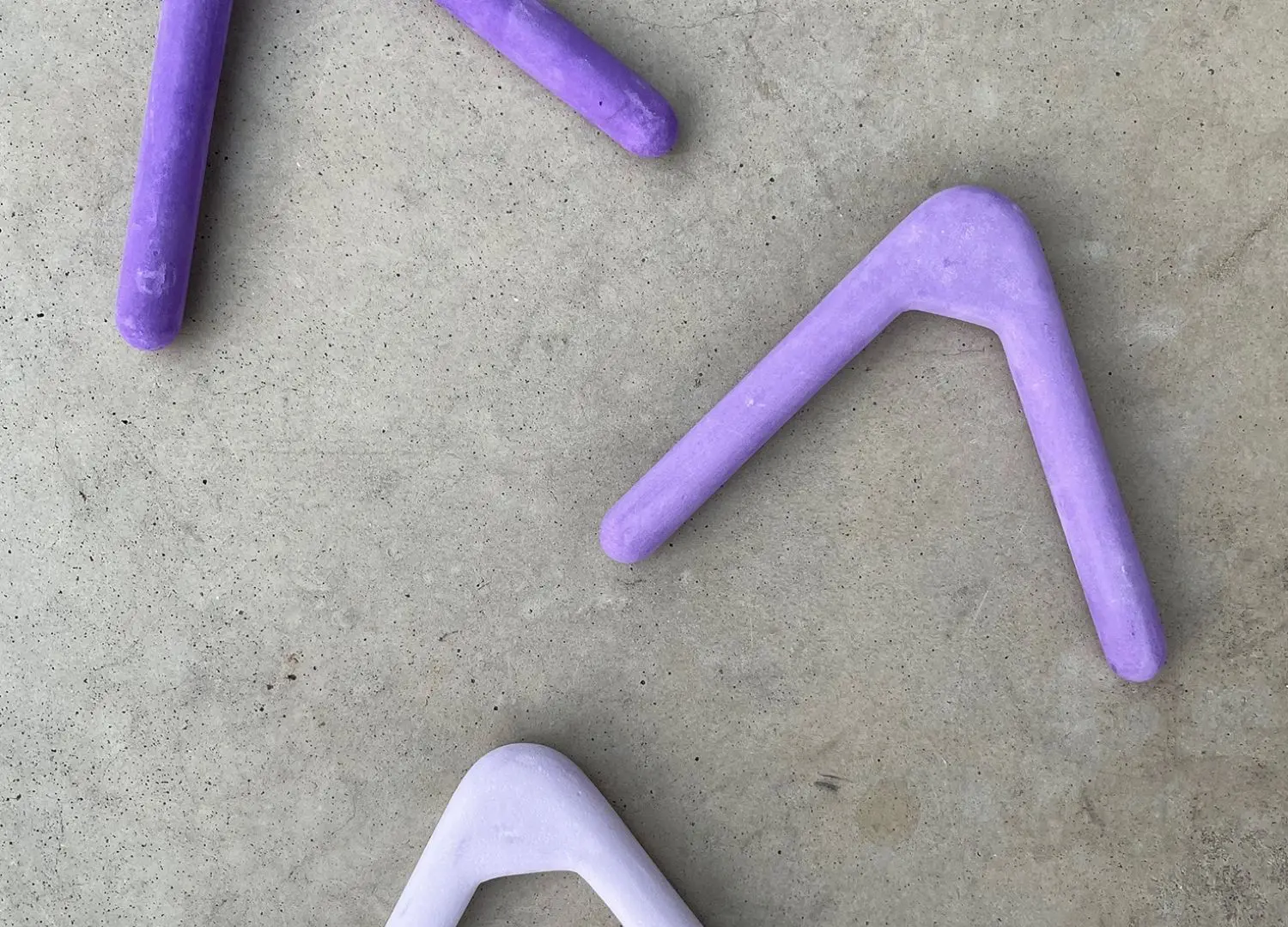
What age range did you have in mind – did you just think of children or adults as well?
Riccardo Proli: While thinking about the project I did not include an age range as a factor to keep in consideration during the design process.
However, after thinking of the hopscotch game and the compass I realised that the project could be something that would be suitable especially for children.
While using the final product with my classmates – we went back in time having fun by simply drawing lines on the ground with a chalk as we did when we were little.
In the end, I think that it would definitely be a useful and fun tool for children because they get to play and learn geometry basics at the same time – but nothing excludes the possibility for an adult to have a ball with it!
Is there a particular reason for your choice of colours?
Riccardo Proli: The choice behind the colours was based mainly on my preferences and what I thought could match better with the grey tone of the asphalt.
My idea was that cold colours such as purple, light blue and green were ideal on this type of surface although warm colours might have been more eye-catching.
I think that Urban Chalk’s colour range can be really varied but – the important aspect is that it needs to feature bright colours.
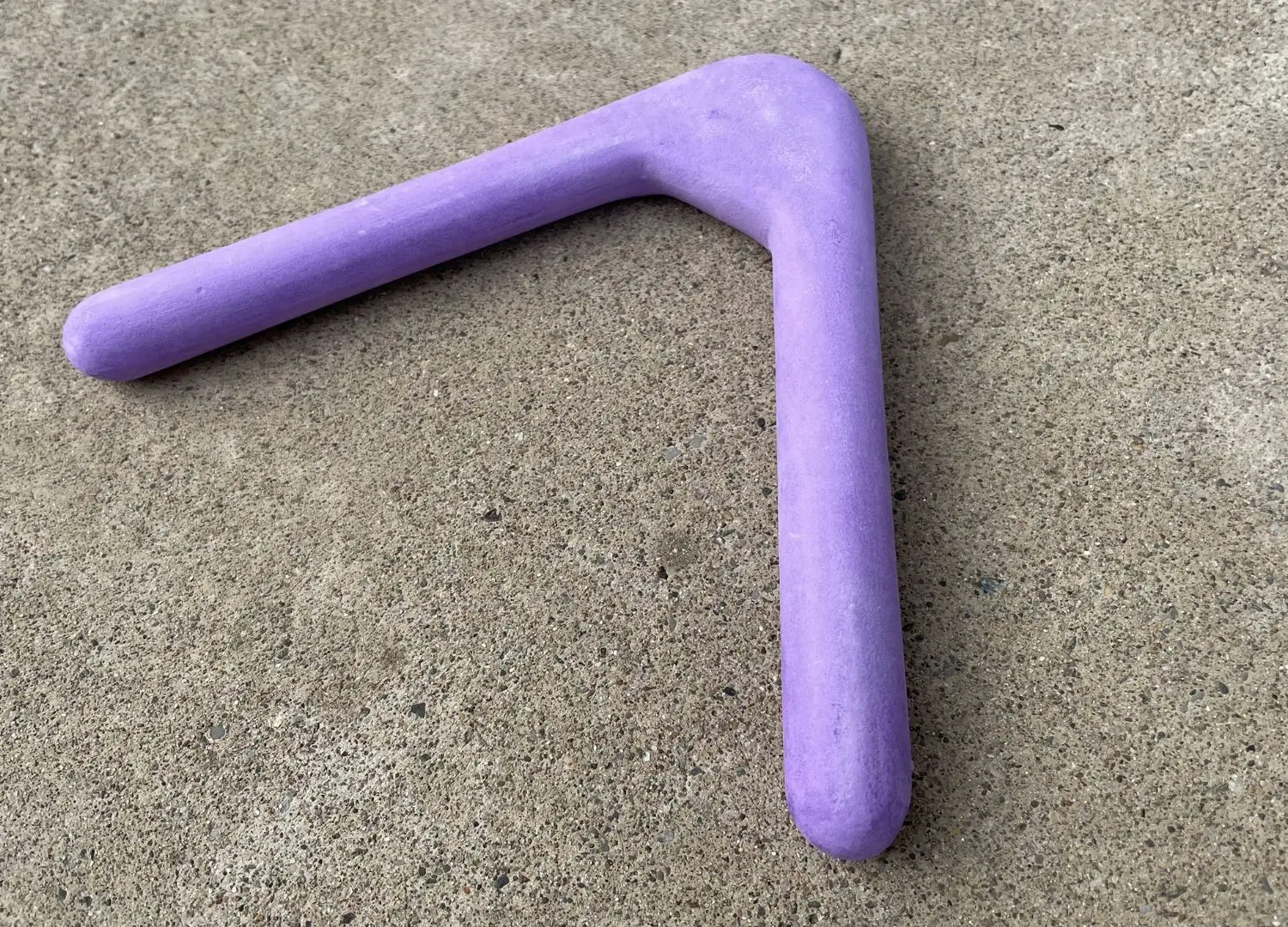
BA Thesis Product: Parole a Zonzo by Sara Millozza
Triennio in Design
Lecturer: Claudio Larcher
‘Parole A Zonzo’ by Sara Millozza features a fascinating wooden cart that is devised with the aim of promoting design for neighbourhoods’ local communities.
Skillfully based on user engagement – its goal is to provide people with inspiration, motivation as well as tools to activate, develop or empower artistic initiatives.
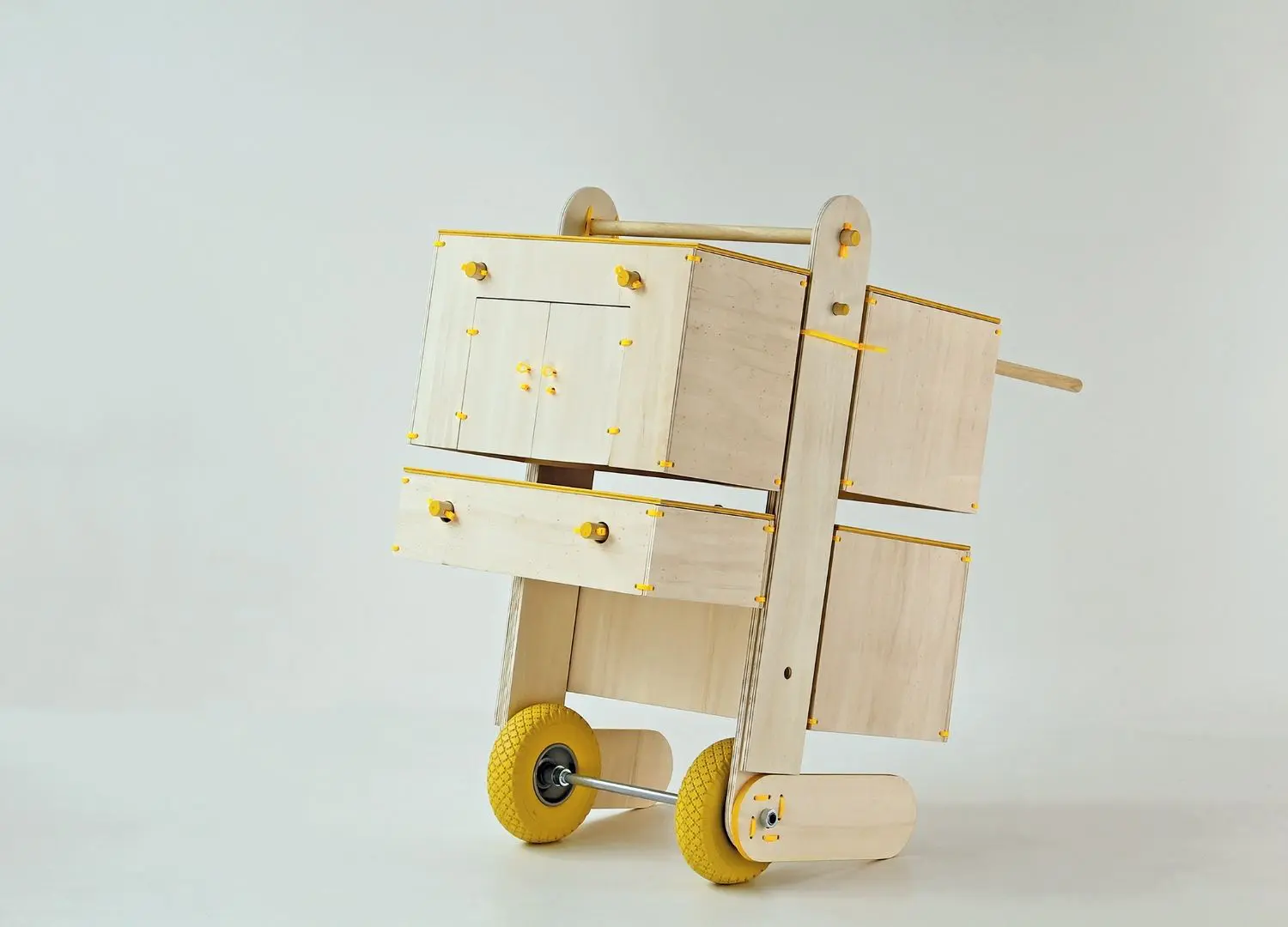
Your project aims at local communities – what are the spaces in the neighbourhood that in your opinion, should be equipped with Parole a Zonzo and why?
Sara Millozza: The idea of Parole a Zonzo arises from the realisation of the social need for aggregation. The utility that the designed object offers is that it can be positioned where this need arises, without any place or space conditioning.
Observing the dynamics of the Lambrate district in Milan, I found the desire and the will to promote innovative initiatives for the various types of public spaces without the limits and constraints of predefined structures.
For these reasons, the designed object does not necessarily have to have a fixed location but is aimed at promoting interaction between people in every public area suitable for free attendance, which generates encounters.

Do you think it should be sold as a finished product or could the construction process itself be done by people, on the spot?
Sara Millozza: The goal of the project is to bring people together so the participatory planning activity helps to create a community spirit or strengthen it as in the case of Lambrate.
The idea grows and develops ‘from below’ to create a constructive and collaborative relationship with local institutions that voluntarily promote participatory work towards co-planning in conjunction with the institutions for the configuration of the neighbourhood.
It’s not a project that is imposed on the territory as a finished product but – is created and shaped by the resident people for the possible needs of the neighbourhood.
Have you thought about a family of products that follow the same logic? What other forms and applications could your project take, considering local communities?
Sara Millozza: More than a family of products, I thought about the transformability of Parole a zonzo.
In fact, its design system offers considerable flexibility and is simple – precisely to ensure maximum design interaction according to the different needs of each particular location.
The magic of this project is to regain the manual and critical skills addressed to the territory, albeit on the basis of a pre-established model, but in practice adaptable to the reality of each application!

Jury Prize and the Best MA Social Project: Digital Nose by Martina Petiti
Biennio Specialistico in Social Design
Lecturer: Andrea De Chirico
The aim of ‘Digital Nose’ by Martina Petiti is to enclose the digital essence, ethereal by nature, in something tangible that can be experienced such as – a perfume.
This one-of-a-kind device is capable of transforming social data into essences with some sort of an olfactory algorithm.
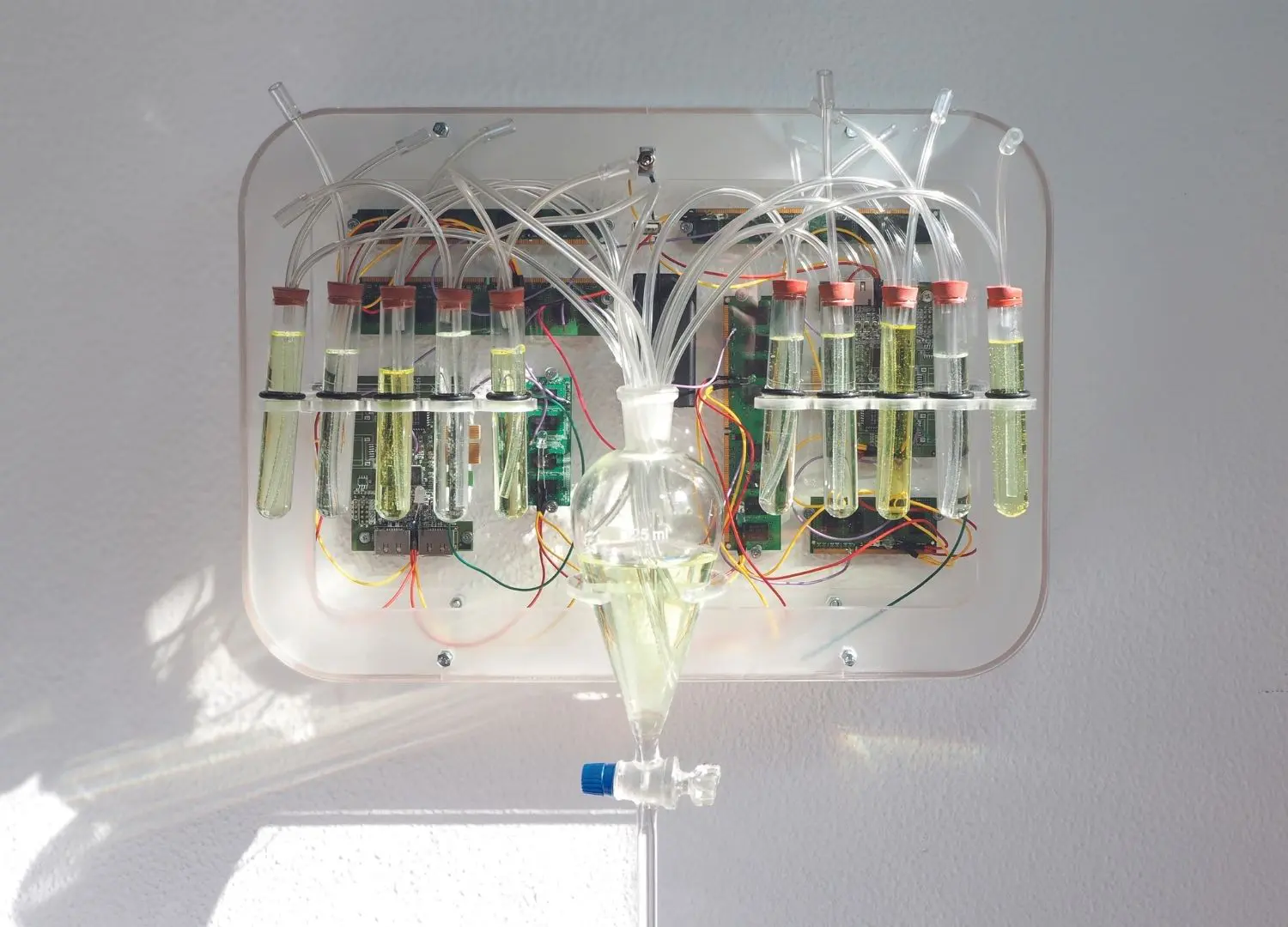
What led you to create the Digital Nose project?
Martina Petiti: The Digital Nose was born from my personal need to mourn, not only for loved ones who have passed away but – by the mourning of not being who we were before the pandemic.
We spent two years in isolation, in which virtual life prevailed over reality. Terms like – smart working, e-commerce, online meetings have become public and bodies have become rarefied. It was like a forced, inevitable leap forward, which brought along with it a new vision of interpersonal relationships.
We lost physical contact, the five senses were penalised but from these – the sense of smell is what fascinates me most since it can’t be controlled and acts involuntarily. It reminds us of people, places, events and memories.

What is the level of feasibility? Do you think, at present, that a prototype could already work in some or all of its aspects? If so, how and why?
Martina Petiti: I believe that this project is absolutely feasible, however, based on the use of Artificial Intelligence – it needs to be developed and this requires time and support from professionals.
For the conception, I interfaced with a Data Scientist who helped me understand how to analyse incoming social data.
For instance – thanks to Natural Language Processing techniques such as Sentiment Analysis, we are able to understand our feelings about a certain topic.
What kind of technology and skills would you need to make the prototype?
Martina Petiti: Regarding the realisation of this project – I would need to interface with a Data Scientist, specialised in interpreting and extracting knowledge from social data.
Then, with the support of a Software Developer it would be necessary to develop the software capable of cataloguing the collected data.
Finally, when dealing with perfumes – the project would need to be supported by a Maître Parfumeur who is responsible for combining the processed data into essences that will then compose the final perfume!

Best Project of the Year 2022: – Blue Metamorphosis by Weam Baroudi, Santa Laude, Jenni Palokaj
Lecturer: Lorenzo De Rosa, Ernesto Iadevaia
‘Blue Metamorphosis’ by Weam Baroudi, Santa Laude and Jenni Palokaj seamlessly focuses on the transformation of face masks into new materials.
Its goal is to avoid the excessive waste of face masks and elongate their life cycle by 100% recycling them.
The obtained materials present different properties depending on the processing and can be employed in the creation of different objects.
It further applies a precise methodological approach carried out by the Academy’s Design Area, aiming to define educational processes in the direction of greater sustainability in design making.
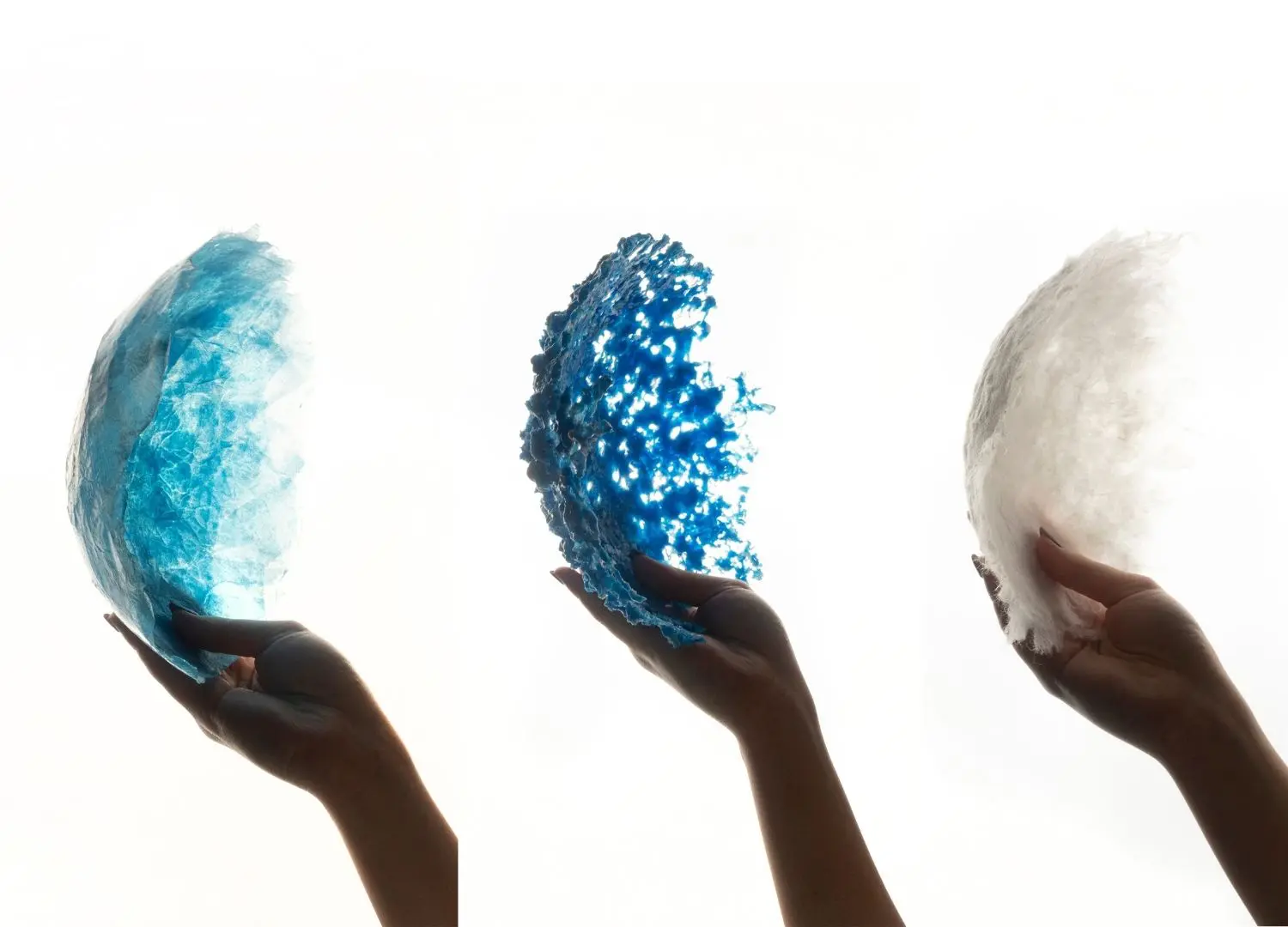
Is the material obtained from the masks strong enough to make a product line like the one presented – what is the production process?
Weam Baroudi, Santa Laude, Jenni Palokaj: The processes used were different from each other in terms of processing – from carding to melting the material.
Each process determines the strength of the material obtained, which is why we can obtain materials with different strengths and hardness, allowing us to create a variety of objects.
Do you plan on utilising the same material for product packaging as well?
Weam Baroudi, Santa Laude, Jenni Palokaj: We focused on creating new materials with different properties.
Precisely for this reason, we think that the materials obtained can be used for a diverse range of packaging.

Have you interpreted this project as an initiative to recycle the masks or are you thinking of a real line of products?
Weam Baroudi, Santa Laude, Jenni Palokaj: The project was born with the aim of 100% recycling the masks, thus hoping to also be able to raise awareness among users.
Surely the results obtained can replace existing materials so as to make new products more sustainable.
We have not yet concretely thought of a line but it’s something we would certainly like to do soon and we are open to working on new products!

Thus creating an appreciation for commitment and quality as well as enhancing the research design approach – the NABA Design Award ceremony is a unique occasion to additionally open a window for anyone observing from the outside who would like to understand the content of the work of NABA design school.













